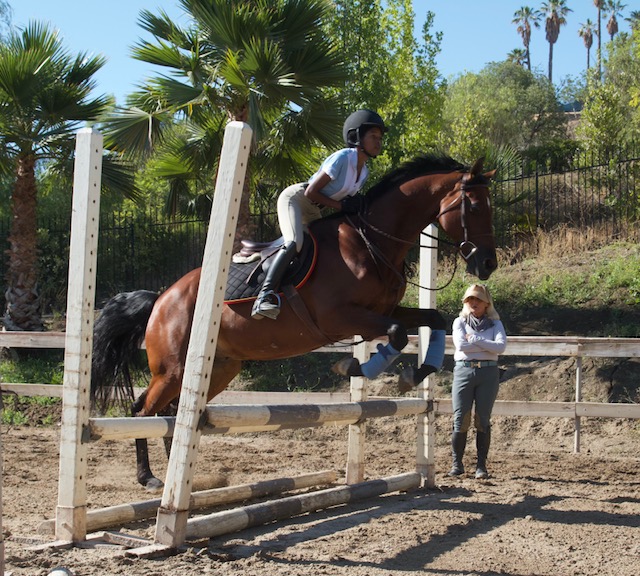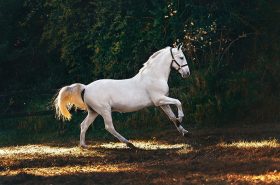Riding horses is exciting, and riders can experience a wide range of emotions within the short duration of their lessons. However, riders who maintain a relaxed mindset while training can begin their journey of feeling their horse and becoming influential. The relaxation element for riders starts at the beginning of their riding career and allows skills to develop and increase overall effectiveness when applying aids. Because the riders learn in a relaxed and soft way to use their aids, spectators watching on the sidelines see the rider as if they are doing absolutely nothing aboard their horse. I can’t think of a better compliment to any rider as when someone remarks, wow, it looks like you are doing absolutely nothing up there!
Riders begin their journey of relaxed riding before they swing their leg over the saddle. Emphasizing riders’ work on basic ground horsemanship handling skills is a great first step. Influences surrounding a rider can include barn friends, coaches, and parents. Ideally, everyone in a rider’s support system contributes to the overall wellness of the rider’s development. A relaxed mindset is an essential skill for riders to develop due to the horse is an animal that is “in the moment” and mirrors the rider’s present emotions. A fearful or anxious rider transfers their feelings to their horse, losing the relaxed softness desired and disrupting the ride.
At the beginning of a rider’s career, matching rider with a proper mount is essential. Coaches must guide, of course, but allowing students to become hands on from the beginning is critical. Riders who are encouraged to groom and work with the horses all the time begin to feel comfortable and relaxed around horses as they would around their pet dog. Involvement influences a rider’s thoughts and emotions and helps motivate riders to become independent horsemen and horsewomen.

When riding, relaxation correlates with a confidence level, too. Riders with trainers that give constant direction often never develop their sense of feeling while riding. Instead, those riders often become dependent on their coach’s guidance. Relaxation when riding can quickly become lost because the need for constant guidance is apparent; the rider loses focus and begins to question themselves on improving their ride at the moment. The rider must develop their own feel while riding to improve their skills.
I often follow a basic model when developing riders, including rhythm (relaxation), balance, following the motion, application of the aids, coordination of the aids, and influencing. These elements sometimes fluctuate when a rider begins to work on the skill; however, each component builds upon the other and contributes to the rider’s effectiveness.
A great example includes a rider learning the feeling of a horse who is truly ridden straight. One must know the feel of a properly straight horse before they can master the skill of cantering toward a fence, softly changing their horses’ bend during the moment of suspension, and land the new lead. Riding a variety of horses allows students to increase their level of feeling and builds riders’ confidence levels, too. A coach who makes learning to ride fun will enable students to self-explore while learning, create a setting where students feel safe, relaxed, and promotes a rider’s autonomy.
Relaxation helps riders’ to ‘get in the zone’ and narrow in and focus on feeling their horse. When riders are relaxed and, in the zone, they become unaware of things around them, such as parents snapping photos or the other horses playing in the paddock. Instead, the rider begins to experience a connected feeling with their horse, skills develop, which form into riding habits. For a student to improve, suggestions from the instructor must become habitual and often begins to feel natural. The rider begins to attain riding habits and apply their aids in a relaxed manner and not disrupt their horse’s movement.
An example of teaching a beginner rider feeling and relaxation can be safely on a lunge line, explain how the rider can drive their horse forward, in rhythm at the walk, using leg pressure applied to the horses’ sides, which increases their horse’s length of step. The simple exercise helps beginning students conceptualize the concept in a relaxed manner and helps transfer similar skills into the trot and canter.
Relaxation is both a natural state and a learned skill. Because situational, emotional, and environmental factors contribute to riders’ progression, instructors need to help both rider and horse become aware of each other’s mental and physical states. As late Dr. Reiner Klimke quotes, “Feel the moment; only then can you influence it.”
What exercises do you practice which help you to feel your horse?
Love this blog post? We think you will like Enjoy the Ride



